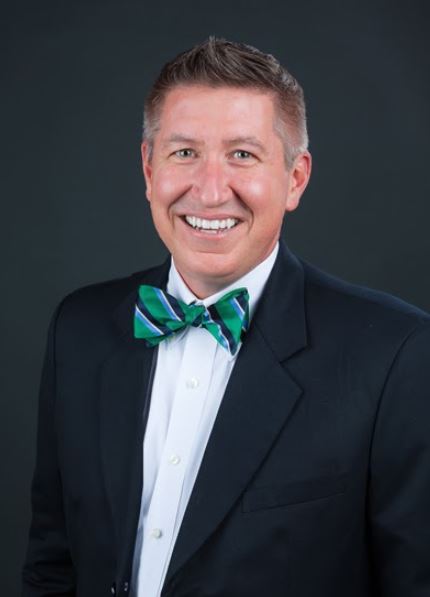All Saints Episcopal head of school Mike Cobb met with me over Zoom in late October. Amid local, state and national stories reporting high virus cases and overextended teachers, the report from All Saints was refreshingly different. At the time of this interview, there were three positive student cases so far this year and zero cases for faculty and staff. Please see the addendum at the end of Cobb’s interview with an update made on Nov. 11, 2020.
A private school founded in Tyler in 1976, All Saints has a student population of 720, from pre-K to 12th grade, with yearly tuition costs of $7,500 and financial grants averaging $5,500. The school was approved for a $1-2 million PPP loan from the Small Business Administration since the pandemic. According to Cobb, students reflect a wide spectrum of families in Tyler, and 38% of All Saints families participate in a family individualized tuition program.
Cobb pointed to several factors causing their outlier status: months of proactive leadership planning, tracing hundreds of potential positive cases and embracing the new coronavirus normal as an opportunity to grow. Here are Cobb’s words, edited for length and clarity.
“Our plan to reopen our campus began in early summer when we formed a task force of healthcare professionals and government leaders in our community, a group that was trying to consider all the research out there at the time, which was rapidly developing.
This taskforce had about 23 members on it and it still exists today. They’re still there as an advisory group for us. We concentrated on what were the central elements for us to think about reopening school.
We knew that things were changing rapidly, that we didn’t have all the information. So we used what we refer to as a scenario based, problem solving technique. We fully formed out four scenarios for the start at school, which we still have moving forward.
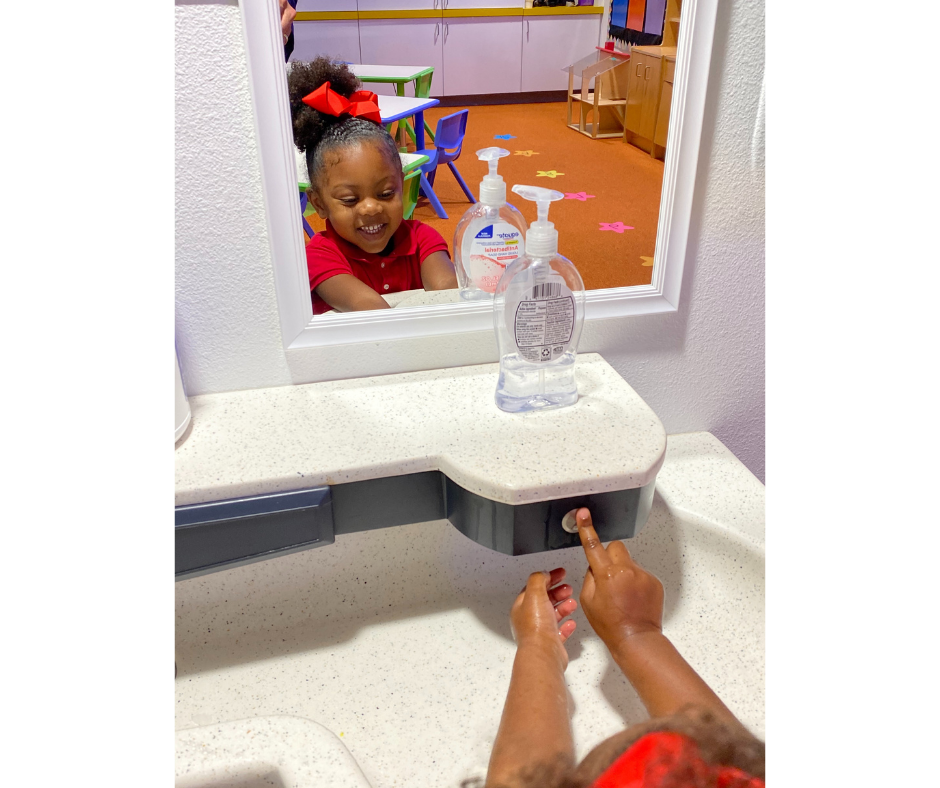
If things were to change, we know and our families know that we would need to move into another scenario, based on what’s happening in our community. I’ve used the analogy of it being more like a dimmer switch than an on-off switch. We have to make certain protocols based on what’s going on around us.
In what we call the All Saints reignite plan, [we] focused on three core areas: screening, cleaning and in between, as we call it. So we really work hard on making sure that our families know how to help us with pre-screening. We have an app that every morning, our families [use] for every child, and they have to go through and report back to us.
Once they come on campus, we do our own series of screening based on the age levels and on the scenario. And then we, of course, increase our cleaning and disinfecting all across the campus. We’ve spent money in our classrooms with things like electrostatic sprayers. Also we put in air purifiers in every classroom to help with the health and safety of the air itself.
And then lastly, the in between: We are really practicing social distancing as much as we can. We have students from age three to 18. We want to make sure that any protocol that we put in place, we could 100% guarantee that we could actually land that.
And so for our early learners, we can’t guarantee that a three year old will always keep six feet distance. We have protocols in place to make sure it’s the best it can be, whereas with 18 year olds, we can feel pretty good that they’re going to lean in with us and contribute to that solution.
We are wearing face coverings for all of our students. We have a cohort model in our lower school, so those students are only with their group of students throughout the day.
There are times where with social distance, they may not have their face coverings on. We have created now 40 learning spaces that are outdoors for our teachers. Every teacher has their own specific learning space. So this task force, again, it was a lot of work. But I believe the success we’ve had is because of the pre-thought and the effort and expertise that we tapped into over the summer.
“We love how lunch is. We’ve talked about, “Why would we ever go back?”
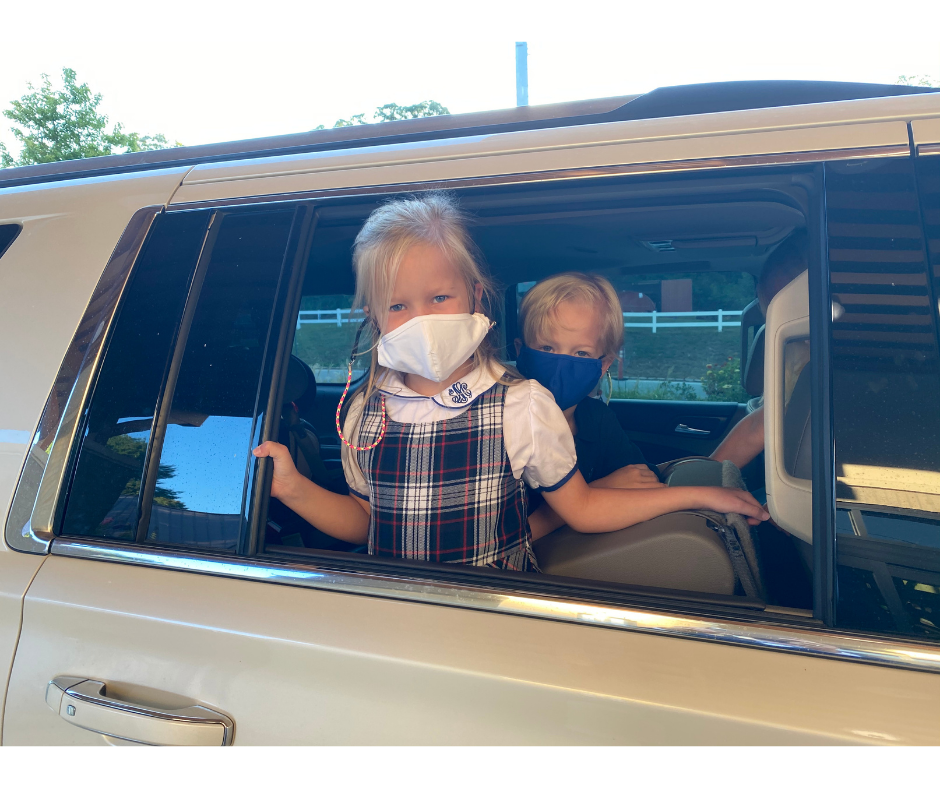
[With lunches] we’ve created outdoor eating areas, so that we can spread kids out. We’ve also spread out the time. We have moved our eating for early learning inside their classrooms [where] we deliver prepackaged meals.
It’s really created a lot of space. It has created more time for us. We used to have eight-top tables, and now those are four-top tables that are spread out, so we can keep six feet while we’re at lunch.
Lunch was really our biggest dilemma, for sure. In the end we feel like lunch is actually more productive, more efficient, and we love how lunch is. We’ve talked about, “Why would we ever go back?” It’s so much more intimate; it’s less chaotic than it used to be, and obviously it’s safer.
For our seniors, we dedicated Rogers Hall for senior lunches, so they have spaces eight in a space at a time but spread out. That’s a really cool privilege that we have to put in place to make this work. [Before], we never thought about what it would mean for them to have their own area, and they really enjoy it.
“We don’t have teachers in the classroom that are trying to do both [in person and online], which has proven obviously to be very difficult, maybe unmanageable.”
Again, there are many opportunities if you’re willing to be more nimble and out of the box. I love thinking about how we disrupt our normal day and how we disrupt education, and this has certainly done that for us. I don’t love everything about (pandemic), but I love some of these elements that have made us really think through things.
As I look at schools all across the nation, we’re being forced to answer new questions. We’re stretching new pedagogical muscles that we’ve never had to use before that [will] benefit our students for generations to come.
We do have students online. We are the only school that I know of that went this route, having dedicated teachers for e-learning. We don’t have teachers in the classroom that are trying to do both, which has proven obviously to be very difficult, maybe unmanageable. So we have teachers that are assigned no more than eight (e-learning) students at a time.
It really supported our students and our teachers, so that they weren’t put in a position where they were asked to do something that maybe can’t be done. We started off the school year with 63 [online] students, and I think we’re down about 50 now.
“This is for sure the most volatile, uncertain, complex, and ambiguous time that I’ve ever led through.”
The work that goes into our planning was probably the biggest challenge and then sustaining it, but I see it more as opportunities. When we started prepping for this in the late spring with my leadership team, we talked a lot about how our world is turning into what they call a VUCA world.
I can promise you I’ve been doing this now 32 years, and this is for sure the most volatile, uncertain, complex and ambiguous time that I’ve ever led through. And I think it’s going to continue. I mean, I do pray that this pandemic will be over soon and then once it’s over, I don’t think we’re going to go back and say, “Okay, this is no longer a VUCA world.”
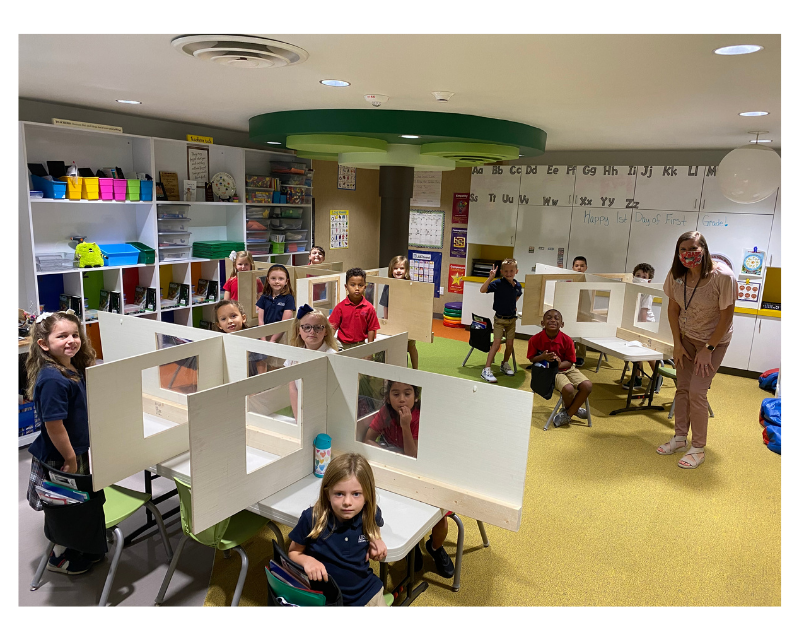
We see that there is really a lot of anxiety built up in the world, and that’s not just around the pandemic. There are a lot of factors that are really facing us right now that make school and education a unique challenge. The pandemic’s created some of those emotions. This is the world we live in now and it’s going to continue.
As leaders, we have to be willing to think about how we can now take those situations and really use them to our benefit and not to feel reactive like, “Oh, man, I can’t believe the world is changing.” Well, it is changing and we just need to be ready for it. And sitting around and bemoaning it really won’t help us to have joy and be good at our jobs.
“We don’t think that we have any magic solution. What we have done is just stayed steadfast and worked really hard to uphold our protocols.”
Our leadership team has really leaned into this idea about how we lead. In volatile, uncertain and changing times — to then bring more vision and clarity, even at those times. I mean, people are anxious not just about their child’s education, but just the world and everything going on around them.
What they don’t want is to have any lack of clarity in what’s happening with their children. We have worked really hard to [help parents say about school], “I know that’s good. I’m getting lots of information about that. The rest of the world I don’t know about, but (school), I feel really good about.”
We don’t think that we have any magic solution. What we have done is just stayed steadfast and worked really hard to uphold our protocols. I think that’s the difference-maker and obviously everything could change tomorrow. We don’t think we have it all figured out, but we know that if we continue to be diligent, that whatever does come, we’ll be in the best position we can be in.
“You can read stories all across the nation where educators don’t have confidence in their district or schools plan, and they don’t want to be on campus. And that is the unraveling of a safe campus.”
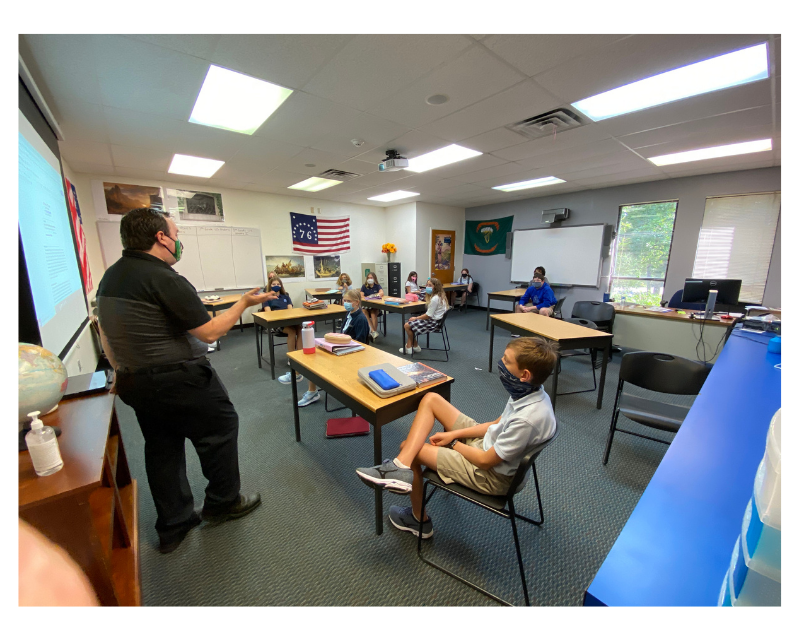
Our faculty and staff have been truly heroic how they’ve gone about everything, from starting in March of this year, with the surprise shift that we all had to make. They just leaned into that.
The good news is for us, we’ve been talking about [living in a changing world] for a while. I think our faculty was ready for that, but still there’s a lot of worry about creating a safe environment. No one had really done it. Never in Tyler, Texas, had we seen a school in a pandemic create a safe environment for over a thousand people to come on campus each day.
I had many Zoom calls to the entire faculty where I was laying out what our protocols are, and obviously letting them know if at any point they had concerns about any of those, let me know. And if they didn’t feel like they could pull off and land these things, they also let me know and we would work with them.
Over time, they’ve seen the protocols are working. Our campus has been a safe place for them. Not to come off as bragging, but honestly our school may be one of the safest places for most of our faculty anywhere other than just staying at home, because our numbers have shown that day in and day out.
The only way that we can pull off this really beautiful thing that we’ve done by having faculty that are willing to really lead that initiative.
You can read stories all across the nation where educators don’t have confidence in their district or schools plan, and they don’t want to be on campus. And that is the unraveling of a safe campus.
I joked with our faculty this year that I was going to get them all yoga mats, because I felt like this year we were all going to have to increase in our flexibility and we would have to be yoga masters in some way this year.
What we really went back to is what we talk about being our north star, which is to ignite passions. If we keep that in mind, even though at times it may be frustrating and daunting, it’s getting us where we’re going.
We have not had faculty or staff who have had a positive case. We’ve had three [student] cases on our campus since mid August, and we only have one active case right now — a student that was not on campus during the contagious period. Right now our campus is truly as healthy as it’s [ever] been. Now, again, I don’t want to jinx myself.
“… my biggest worry at this point is not really what happens on campus. It is what happens when they leave here.”
Our families’ willingness to help us uphold these protocols is essential.
We do our screening on campus, but the pre screening is so important. We’ve said all along that what we might be able to do in a few seconds or a few minutes early in a school day to screen a students can never compare it to what it would take for a parent to be able to have the last 24 hours to watch a student; to be able to see how they’re feeling that morning; to do a temperature check.
All of those things have been so vital to our success, but also our parents doing the best they can to mitigate their own risks while they’re at home. I’ve said many times, my biggest worry at this point is not really what happens on campus. It is what happens when they leave here.
That sets us up for additional risks that I can’t control and that I really have to be responsible for in an indirect way. We have families from every shape, size, and form that you can imagine.
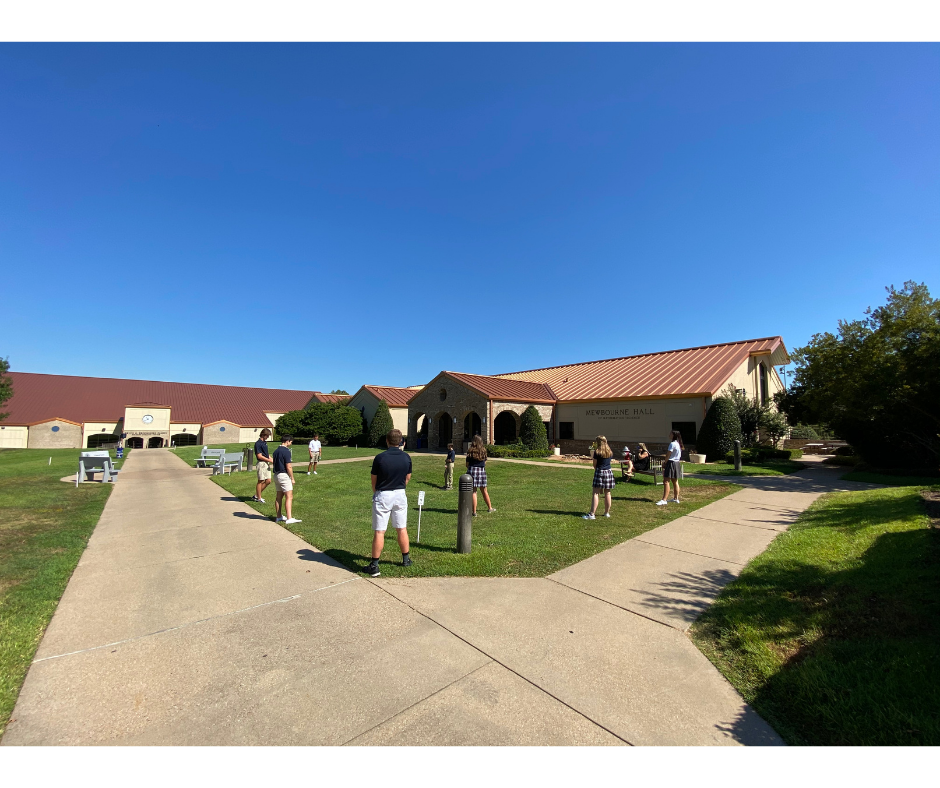
We have 38% of our families as part of our family individualized tuition program, and many of those are dual working families, many of them are essential workers. We have a large number of families that work in the healthcare field; many of those are working in our code response units across Tyler right now.
Certainly, this situation and the things that have happened over the last many months have been polarizing, I have families on both extremes here.
Some believe we’re doing too much and some that think we’re not doing enough. We are doing all that we can based on the research that’s out there. We are following the experts, we are listening to what the infectious disease doctors and epidemiologists have said about this disease and what we know right now.
When we’ve had pushback, what’s really interesting is I literally have had nobody go to the second level when I say, “We need to do whatever we can do to keep our campus open and to keep our kids healthy and safe while we’re in school.” They always say, “Oh, I know, I know that’s what we need to do.”
“I warned my team early on the reason we have success is because we are not relaxing our restrictions and that we are not being complacent.”
Our parents understand that they don’t want to risk having to maybe go back to remote learning for all or not be able to be on campus. And of course, most of that pushback comes from folks that feel safe now.
Complacency is such a dangerous thing in all areas of life. I warned my team early on the reason we have success is because we are not relaxing our restrictions and that we are not being complacent.
We’re beating the odds. We’re not going to regress right now. A new phrase I’ve heard people in our community refer to the pandemic in the past tense. We literally are in still the midst of the pandemic. We have our highest numbers since really the height of it in July. And so I think people are fatigued and they want to think it’s over.
We’ve had over 350 situations that we’ve had to investigate and work through to have as low numbers as we’ve had. We’ve had 350 situations where someone on a pre-screen has answered a question in a way that made us keep them off campus and to have them go see their doctor, or we’ve had our medical team have to walk through. I don’t think people realize the work for the places that are really doing this well, that has gone into that. It’s certainly far from over.
We’ve spent about $50,000 this year on COVID-19 related items, from face coverings to different cleaning materials, but then also with our e-learning teachers, and then our medical advisory team that we had to reposition. I mean, it takes a lot of resources to do this.
Obviously we’ve had to spend more money, but we’ve also just had to decide we had to prioritize. I think that I’d like for everyone who has a child in any school to understand that there are a lot of people that are being pushed to the extremes and resources pushed to extremes to keep campuses safe. I hope everybody recognizes that and appreciates their educators wherever they are.
[Every] campus has unique challenges, but they also have their opportunities in it. In different communities, based on numbers, it may not be safe for a school to be on campus, while across town may have different variables that it could be okay for them to be on campus. I think we have to always understand that.”
Addendum:
As of Nov. 11, All Saints’ numbers have changed. According to an email update from Cobb, there have now been a total of 12 positive virus cases: one lower school student, two middle school students, six upper school students, one middle school faculty and two staff.
Cobb notes, “We believe our ASES protocols are working well to mitigate our exposure and risk on campus. However, we are struggling to balance our efforts on campus with the activities that are occurring off campus.
The large majority of our current cases can be directly traced to off-campus activities. Most of last week’s cases can be tied to two weekend community events for high schoolers that were hosted with little to no COVID-19 protocols.”
Thanks for reading this story. Just one more thing. If you believe in the power of local journalism here in Tyler, I'm hoping that you'll help us take The Loop to the next level.
Our readers have told us what they want to better understand about this place we all call home, from Tyler's north-south divide to our city's changing demographics. Power, leadership, and who gets a seat at the table. How Tyler is growing and changing, and how we can all help it improve. Local arts, culture, entertainment, and food.
We can't do this alone. If you believe in a more informed, more connected, more engaged Tyler, help us tell the stories that need to be told in our community. Get free access to select Loop events, behind-the-scenes updates about the impact and goals of our work, and, above all, a chance to play a part in bringing more fresh, in-depth, unexpected journalism to Tyler.


